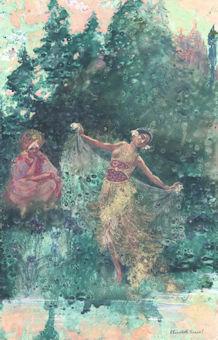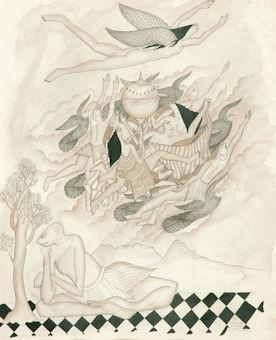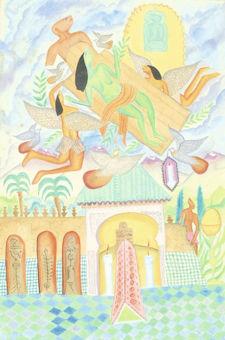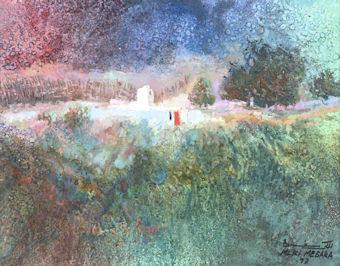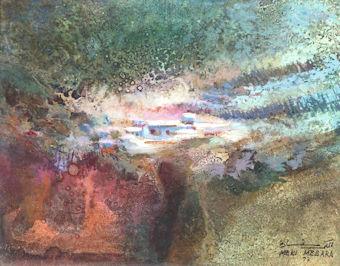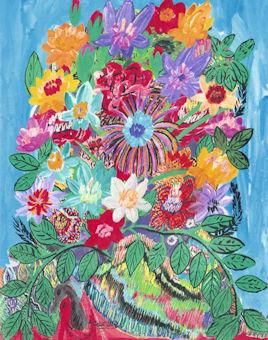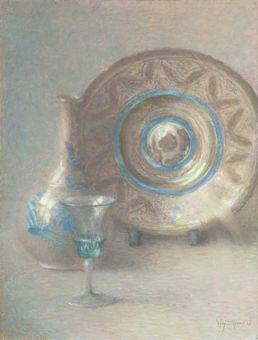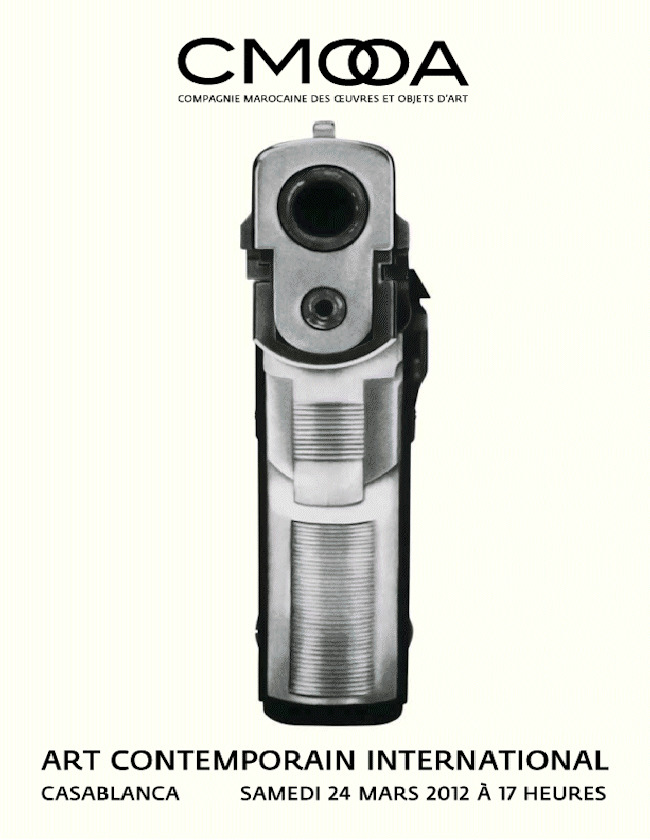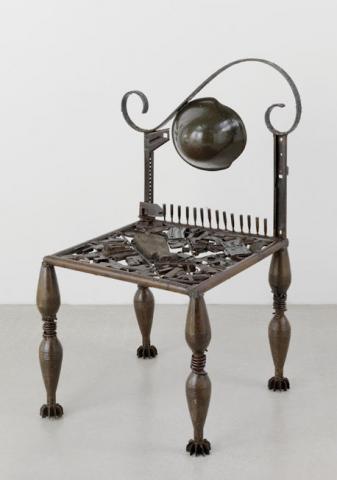Fer, armes de la guerre civile (mozambique) recyclées
118 x 75 x 66 cm
Gonçalo Mabunda travaille sur la mémoire de son pays, le Mozambique, sorti en 1995 d’une longue et sanglante guerre civile commencée au milieu des années 70. Marqué par une enfance rythmée par la violence et l’absurdité de cette guerre, Gonçalo Mabunda rejoint le studio Núcleo de Arte pour participer, en 1998, au projet de transformation des armes récupérées à la fin de la guerre civile en objets d’art. AK 47, lance-roquettes, pistolets et autres objets de destruction prennent alors des formes anthropomorphiques. Cette réincarnation matérielle d’instruments de violence en objets esthétiques à l’apparence inoffensive porte en elle le récit de l’absurdité de la guerre civile qui a divisé le pays. La mécanique de la déconstruction et de la reconstruction à l’œuvre chez Mabunda se décline notamment à travers ses trônes, attributs du pouvoir par excellence, qui lui ont valu une reconnaissance internationale. Réalisés à partir d’armes de guerre, ces symboles tribaux et claniques typiquement africains sont sans doute pour lui une façon ironique de s’asseoir sur l’aberration de la guerre civile qui a isolé son pays pendant longtemps.
Gonçalo Mabunda works on the memory of his country, Mozambique, which emerged in 1995 from a long and bloody civil war started in the mid Seventies. With a childhood marked by the violence and absurdity of this war, Gonçalo Mabunda joined the studio Núcleo de Arte to take part, in 1998, in the project of transformation of the weapons retrieved at the end of the civil war into art objects. He gives AK 47s, rocket launchers, guns and other destruction objects an anthropomorphic shape. This material reincarnation of violent instruments into aesthetic objects with an inoffensive appearance carries with it the account of the absurdity of the civil war that divided the country. The mechanics of deconstruction and reconstruction at work in Mabunda’s drawings are perceived through his thrones, the archetypal attributes of power, which earned him an international recognition. Made from weapons, these typically African tribal and clannish symbols are no doubt an ironic way for him to disregard the aberration of the civil war that had isolated his country for so long.

